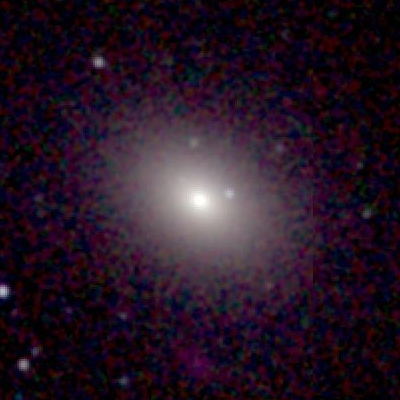|
NGC 7049
NGC 7049 is a lenticular galaxy that spans about 150,000 light-years and lies about 100 million light-years away from Earth in the inconspicuous southern constellation of Indus (constellation), Indus. NGC 7049's unusual appearance is largely due to a prominent rope-like dust ring which stands out against the starlight behind it. These dust lanes are usually seen in young galaxies with active star-forming regions. NGC 7049 shows the features of both an elliptical galaxy and a spiral galaxy, and has relatively few globular clusters, indicative of its status as a lenticular type. NGC 7049 is the Brightest Cluster Galaxy, brightest (BCG) of the Indus triplet of galaxies (NGC 7029, NGC 7041, NGC 7049), and its structure might have arisen from several recent galaxy collisions. Typical BCGs are some of the oldest and most massive galaxies. References External links *Simbad database NGC objects, 7049 Indus (constellation) Lenticular galaxies {{lenticular-galaxy-stub ... [...More Info...] [...Related Items...] OR: [Wikipedia] [Google] [Baidu] |
Hubble Space Telescope
The Hubble Space Telescope (often referred to as HST or Hubble) is a space telescope that was launched into low Earth orbit in 1990 and remains in operation. It was not the first space telescope, but it is one of the largest and most versatile, renowned both as a vital research tool and as a public relations boon for astronomy. The Hubble telescope is named after astronomer Edwin Hubble and is one of NASA's Great Observatories. The Space Telescope Science Institute (STScI) selects Hubble's targets and processes the resulting data, while the Goddard Space Flight Center (GSFC) controls the spacecraft. Hubble features a mirror, and its five main instruments observe in the ultraviolet, visible, and near-infrared regions of the electromagnetic spectrum. Hubble's orbit outside the distortion of Earth's atmosphere allows it to capture extremely high-resolution images with substantially lower background light than ground-based telescopes. It has recorded some of the most detaile ... [...More Info...] [...Related Items...] OR: [Wikipedia] [Google] [Baidu] |
Elliptical Galaxy
An elliptical galaxy is a type of galaxy with an approximately ellipsoidal shape and a smooth, nearly featureless image. They are one of the four main classes of galaxy described by Edwin Hubble in his Hubble sequence and 1936 work ''The Realm of the Nebulae'', with their intermediate scale disks, a subset of the "early-type" galaxy population. Most elliptical galaxies are composed of older, low-mass stars, with a sparse interstellar medium and minimal star formation activity, and they tend to be surrounded by large numbers of globular clusters. Elliptical galaxies are believed to make up approximately 10–15% of galaxies in the Virgo Supercluster, and they are not the dominant type of galaxy in the universe overall. They are preferentially found close to the centers of galaxy clusters. Elliptical galaxies range in size from dwarf ellipticals with tens of millions of stars, to supergiants of over one hundred trillion stars that dominate their galaxy clusters. Original ... [...More Info...] [...Related Items...] OR: [Wikipedia] [Google] [Baidu] |
NGC 7049 2MASS
NGC commonly refers to: * New General Catalogue of Nebulae and Clusters of Stars, a catalogue of deep sky objects in astronomy NGC may also refer to: Companies * NGC Corporation, name of US electric company Dynegy, Inc. from 1995 to 1998 * National Gas Company of Trinidad and Tobago, state-owned natural gas company in Trinidad and Tobago * National Grid plc, a former name of National Grid Electricity Transmission plc, the operator of the British electricity transmission system * Northrop Grumman Corporation, aerospace and defense conglomerate formed from the merger of Northrop Corporation and Grumman Corporation in 1994 * Numismatic Guaranty Corporation, coin certification company in the United States Other uses * National Gallery of Canada, art gallery founded in 1880 in Ottawa, Canada * National Geographic, documentary and reality television channel established in the United States in 2001 formerly called National Geographic Channel * Native Girls Code, US non-profit org ... [...More Info...] [...Related Items...] OR: [Wikipedia] [Google] [Baidu] |
NGC 7041
NGC 7041 is a lenticular galaxy located about 80 million light-years away in the constellation of Indus. NGC 7041 was discovered by astronomer John Herschel on July 7, 1834. NGC 7041 is part of the Indus Triplet of galaxies which contains the nearby galaxy NGC 7049 and the galaxy NGC 7029. See also * NGC 7007 * List of NGC objects (7001–7840) This is a list of NGC objects 7001–7840 from the New General Catalogue (NGC). The astronomical catalogue is composed mainly of star clusters, nebulae, and galaxies. Other objects in the catalogue can be found in the other subpages of the list of ... References External links {{DEFAULTSORT:NGC 7041 Lenticular galaxies Indus (constellation) 7041 66463 Astronomical objects discovered in 1834 ... [...More Info...] [...Related Items...] OR: [Wikipedia] [Google] [Baidu] |
NGC 7029
NGC 7029 is an elliptical galaxy located about 120 million light-years away from Earth in the constellation Indus. NGC 7029 has an estimated diameter of 129,000 light-years. It was discovered by astronomer John Herschel on October 10, 1834. It is in a pair of galaxies with NGC 7022. One supernova has been observed in NGC 7029: SN 2023qov ( type Ia, mag. 17.5). Group Membership NGC 7029 is part of the Indus Triplet of galaxies which contains the galaxies NGC 7041 and NGC 7049. See also * List of NGC objects (7001–7840) This is a list of NGC objects 7001–7840 from the New General Catalogue (NGC). The astronomical catalogue is composed mainly of star clusters, nebulae, and galaxies. Other objects in the catalogue can be found in the other subpages of the list of ... * NGC 7002 References External links Elliptical galaxies Indus (constellation) 7029 66318 Astronomical objects discovered in 1834 {{Elliptical-galaxy-stub ... [...More Info...] [...Related Items...] OR: [Wikipedia] [Google] [Baidu] |
Brightest Cluster Galaxy
A brightest cluster galaxy (BCG) is defined as the brightest galaxy in a cluster of galaxies. BCGs include the most massive galaxies in the universe. They are generally elliptical galaxies which lie close to the geometric and kinematical center of their host galaxy cluster, hence at the bottom of the cluster potential well. They are also generally coincident with the peak of the cluster X-ray emission. Formation scenarios for BCGs include: * Cooling flow—Star formation from the central cooling flow in high density cooling centers of X-ray cluster halos. The study of accretion populations in BCGs has cast doubt over this theory and astronomers have seen no evidence of cooling flows in radiative cooling clusters. The two remaining theories exhibit healthier prospects. * Galactic cannibalism—Galaxies sink to the center of the cluster due to dynamical friction and tidal stripping. * Galactic merger—Rapid galactic mergers between several galaxies take place during cluster col ... [...More Info...] [...Related Items...] OR: [Wikipedia] [Google] [Baidu] |
Globular Clusters
A globular cluster is a spheroidal conglomeration of stars. Globular clusters are bound together by gravity, with a higher concentration of stars towards their centers. They can contain anywhere from tens of thousands to many millions of member stars. Their name is derived from Latin (small sphere). Globular clusters are occasionally known simply as "globulars". Although one globular cluster, Omega Centauri, was observed in antiquity and long thought to be a star, recognition of the clusters' true nature came with the advent of telescopes in the 17th century. In early telescopic observations globular clusters appeared as fuzzy blobs, leading French astronomer Charles Messier to include many of them in his catalog of astronomical objects that he thought could be mistaken for comets. Using larger telescopes, 18th-century astronomers recognized that globular clusters are groups of many individual stars. Early in the 20th century the distribution of globular clusters in the sky wa ... [...More Info...] [...Related Items...] OR: [Wikipedia] [Google] [Baidu] |
Spiral Galaxy
Spiral galaxies form a class of galaxy originally described by Edwin Hubble in his 1936 work ''The Realm of the Nebulae''Alt URL pp. 124–151) and, as such, form part of the . Most spiral galaxies consist of a flat, rotating containing s, gas and dust, and a central concentration of stars known as the |
Light-years
A light-year, alternatively spelled light year, is a large unit of length used to express astronomical distances and is equivalent to about 9.46 trillion kilometers (), or 5.88 trillion miles ().One trillion here is taken to be 1012 (one million million, or billion in long scale). As defined by the International Astronomical Union (IAU), a light-year is the distance that light travels in a vacuum in one Julian year (365.25 days). Because it includes the time-measurement word "year", the term ''light-year'' is sometimes misinterpreted as a unit of time. The ''light-year'' is most often used when expressing distances to stars and other distances on a galactic scale, especially in non-specialist contexts and popular science publications. The unit most commonly used in professional astronomy is the parsec (symbol: pc, about 3.26 light-years) which derives from astrometry; it is the distance at which one astronomical unit subtends an angle of one second of arc. Defini ... [...More Info...] [...Related Items...] OR: [Wikipedia] [Google] [Baidu] |
Advanced Camera For Surveys
The Advanced Camera for Surveys (ACS) is a third-generation axial instrument aboard the Hubble Space Telescope (HST). The initial design and scientific capabilities of ACS were defined by a team based at Johns Hopkins University. ACS was assembled and tested extensively at Ball Aerospace & Technologies Corp. and the Goddard Space Flight Center and underwent a final flight-ready verification at the Kennedy Space Center before integration in the cargo bay of the Columbia orbiter. It was launched on March 1, 2002, as part of Servicing Mission 3B (STS-109) and installed in HST on March 7, replacing the Faint Object Camera (FOC), the last original instrument. ACS cost US$86 million at that time. ACS is a highly versatile instrument that became the primary imaging instrument aboard HST. It offered several important advantages over other HST instruments: three independent, high-resolution channels covering the ultraviolet to the near-infrared regions of the spectrum, a large detector ar ... [...More Info...] [...Related Items...] OR: [Wikipedia] [Google] [Baidu] |
Lenticular Galaxy
A lenticular galaxy (denoted S0) is a type of galaxy intermediate between an elliptical (denoted E) and a spiral galaxy in galaxy morphological classification schemes. It contains a large-scale disc but does not have large-scale spiral arms. Lenticular galaxies are disc galaxies that have used up or lost most of their interstellar matter and therefore have very little ongoing star formation. They may, however, retain significant dust in their disks. As a result, they consist mainly of aging stars (like elliptical galaxies). Despite the morphological differences, lenticular and elliptical galaxies share common properties like spectral features and scaling relations. Both can be considered early-type galaxies that are passively evolving, at least in the local part of the Universe. Connecting the E galaxies with the S0 galaxies are the ES galaxies with intermediate-scale discs. Morphology and structure Classification Lenticular galaxies are unique in that they have a visibl ... [...More Info...] [...Related Items...] OR: [Wikipedia] [Google] [Baidu] |
Principal Galaxies Catalogue
The Catalogue of Principal Galaxies (PGC) is an astronomical catalog published in 1989 that lists B1950 and J2000 equatorial coordinates and cross-identifications for 73,197 galaxies. It is based on the Lyon-Meudon Extragalactic Database (LEDA), which was originally started in 1983. 40,932 coordinates (56%) have standard deviations smaller than . A total of 131,601 names from the 38 most common sources are listed. Available mean data for each object are given: * 49,102 morphological descriptions, * 52,954 apparent major and minor axis, * 67,116 apparent magnitudes, * 20,046 radial velocities and * 24,361 position angles. The Lyon-Meudon Extragalactic Database was eventually expanded into HyperLEDA, a database of a few million galaxies. Galaxies in the original PGC catalogue are numbered with their original PGC number in HyperLEDA. Numbers have also been assigned for the other galaxies, although for those galaxies not in the original PGC catalogue, it is not recommended to ... [...More Info...] [...Related Items...] OR: [Wikipedia] [Google] [Baidu] |









